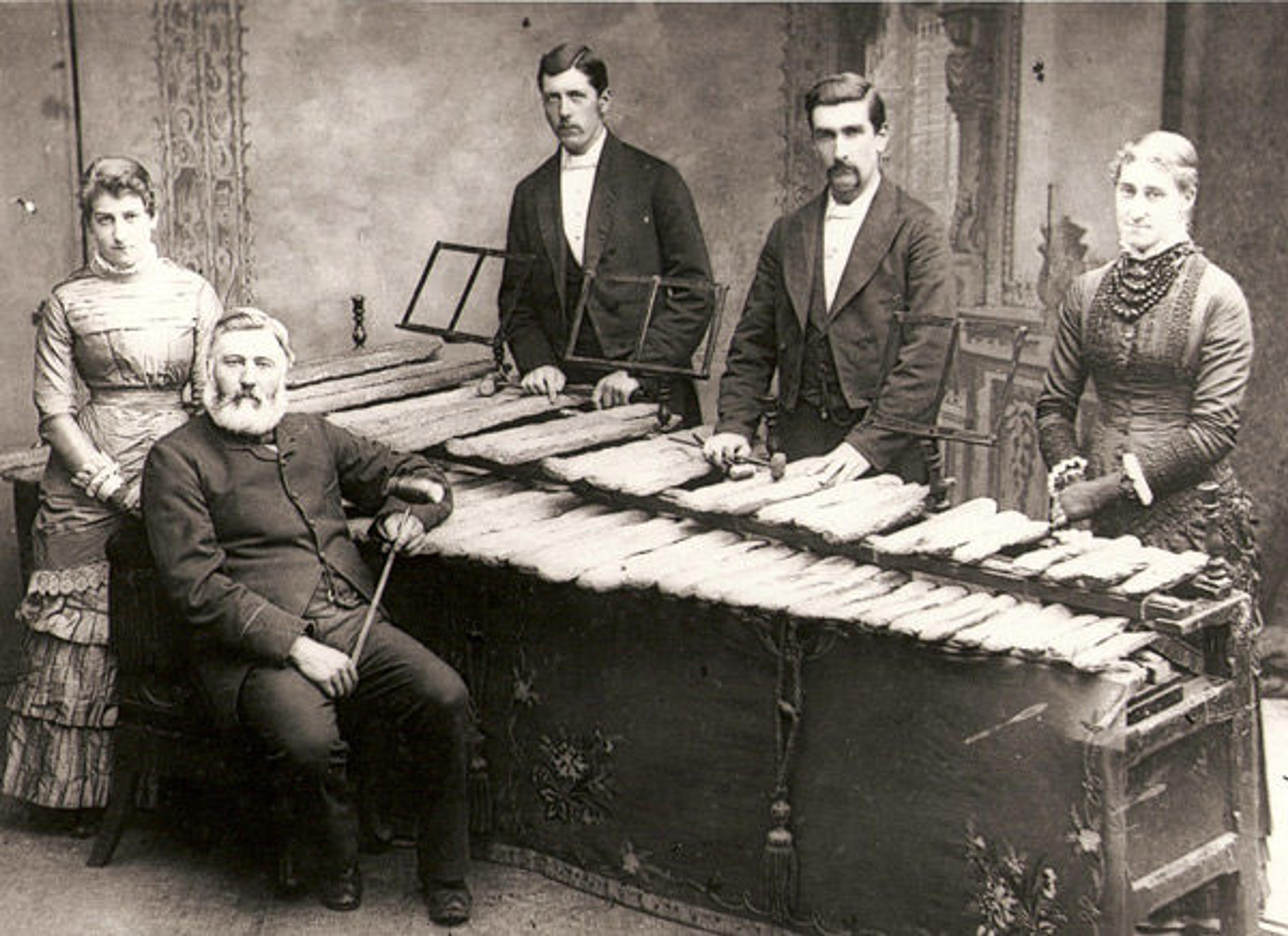
The Till Family Rock Band. Photo courtesy of a private collection
«You could be forgiven for thinking that a reference to an 1890 "rock band" concert in New Jersey was a typo in the Bayonne Herald, but you would be mistaken. Instead, the article pays tribute the Till family, the remarkable English musicians who made and played the so-called rock band, also referred to as a rock harmonicon or stone xylophone, an instrument which has inspired the upcoming performance Wild Sound: Glenn Kotche and Third Coast Percussion in the Grace Rainey Rogers Auditorium on Friday, May 29.»
The Till family were one of a handful of rock-band groups that captivated British audiences during the Victorian period, all of whom hailed from the area of Keswick in the English Lake District—the source of Skiddaw stone, a type of hornfels prized for its tone quality and resonance. Tuned bars of this sonorous rock were supported on a wooden stand and laid out much like a modern xylophone, with the largest instruments produced spanning seven octaves and weighing over one and a half tons.
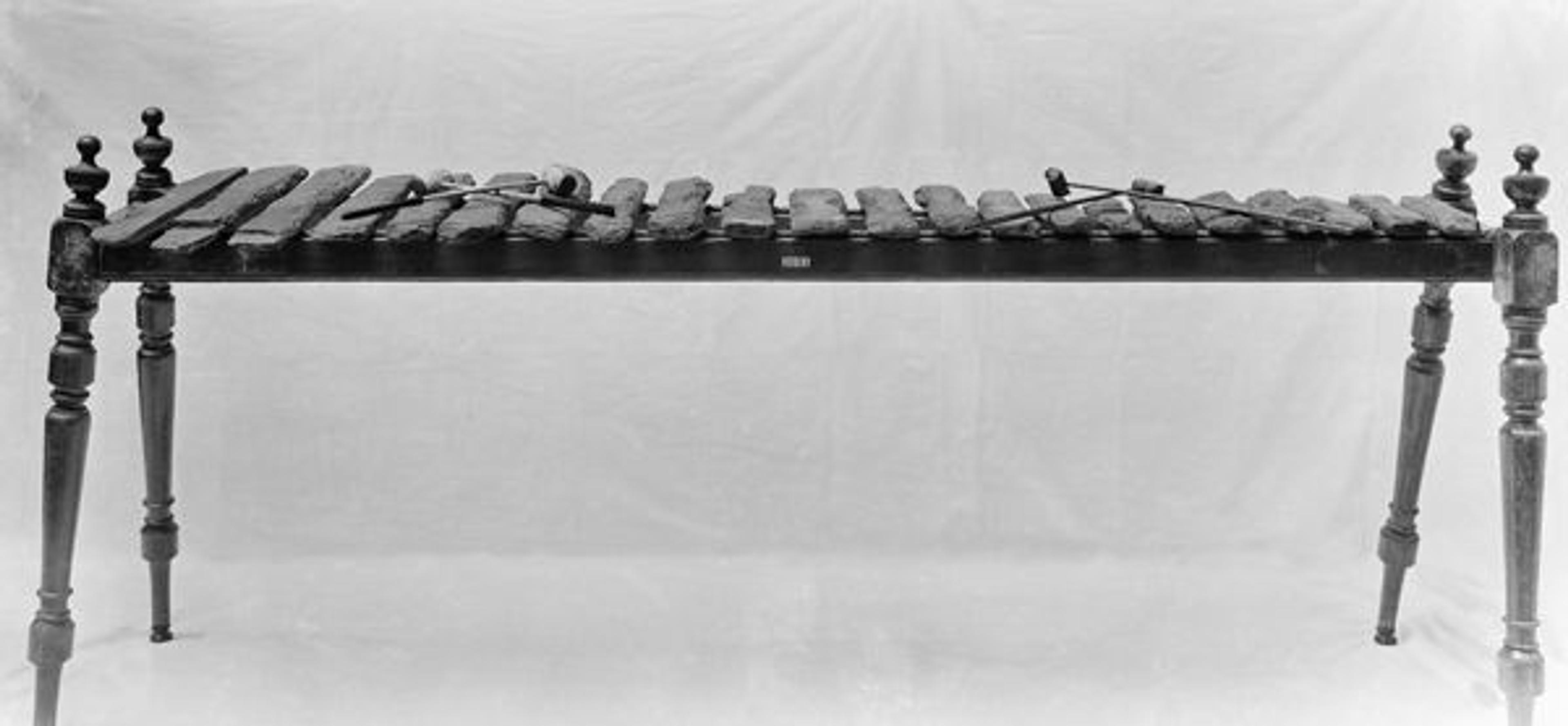
William Till. Rock Harmonicon, ca. 1880. British. Gneiss and hornblende schist; Overall: H. 106.7 x L. 247.7 cm (42 x 97 1/2 in.). The Metropolitan Museum of Art, New York, The Crosby Brown Collection of Musical Instruments, 1889 (89.4.2931)
The Met's rock harmonicon, produced around 1880 and gifted to the Museum as part of the Crosby Brown Collection of Musical Instruments, has twenty two bars that produce a three-octave diatonic scale, and originally may have also included a second row of stones to enable a full chromatic scale. A range of hammers and leather- and cloth-covered mallets were used to coax different timbres from the rock band. Contemporary listeners described the Tills' rock band as "an instrument whose upper tones are as sweet as silver bells, and whose lower ones have the depth and resonance of an organ" (Edinburgh Courant, August 29, 1882). Playing these instruments was often a team effort, as can be seen in photos of the five members of the Till family performing together on their stone xylophone.
Audiences throughout England, Scotland, and Europe heard the Till Family Rock Band during their extensive concert tours. The sound of the rock band caught the ear of the English art critic John Ruskin, who encouraged the family's performances and even owned one of William Till's stone xylophones. In the late 1880s, the family embarked on a concert tour of the United States and Canada, later settling for five years in Bayonne, New Jersey. During their time in North America, they are said to have given over one thousand concerts.
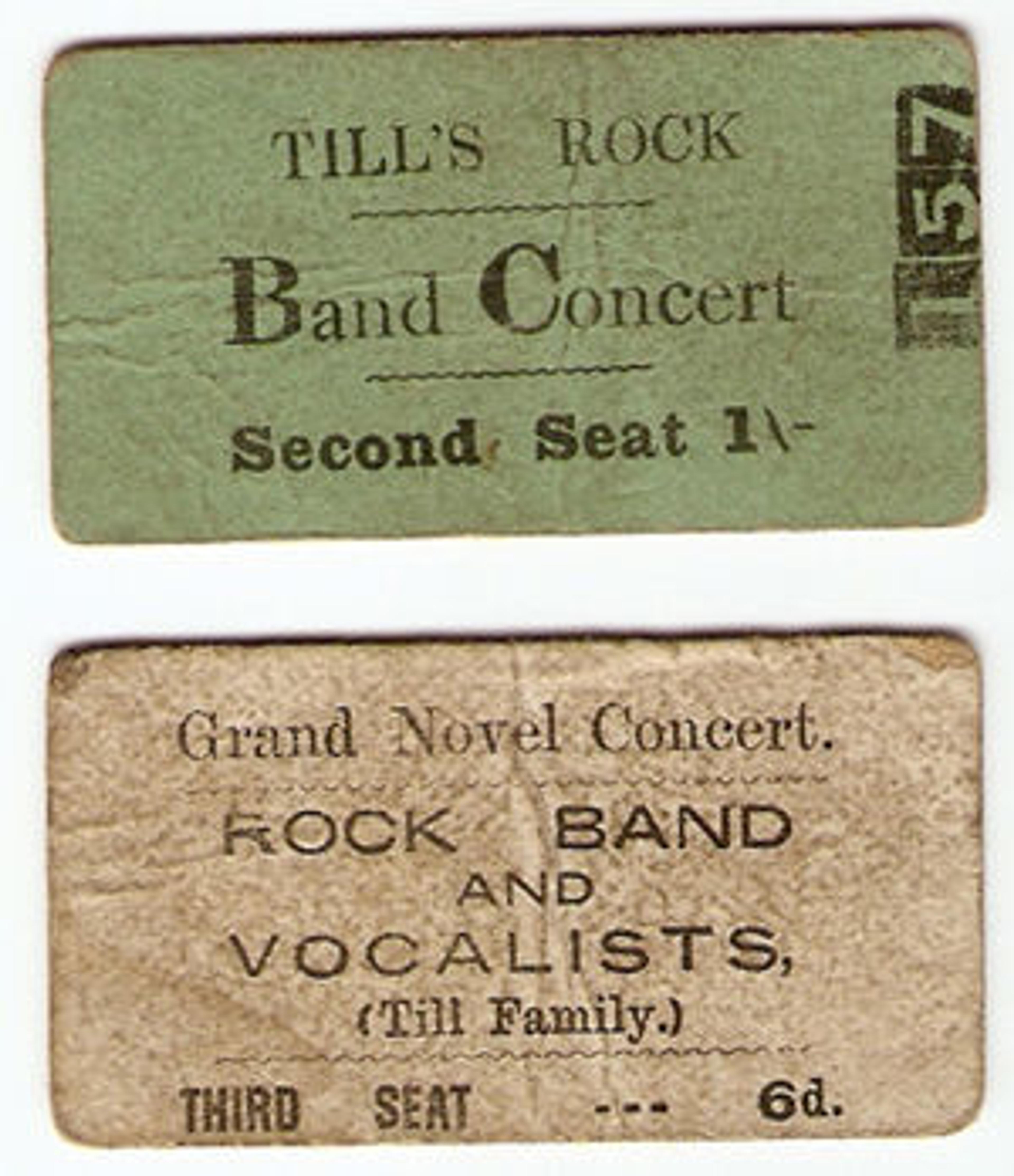
Left: Till Family Rock Band concert tickets. Photo courtesy of a private collection
The family became friends with Thomas Edison and performed for several years at the Chautauqua Institution. Surviving programs give a flavor of their concerts; in addition to popular songs, hymns, and opera melodies played on the rock band, listeners were also treated to vocal solos and performances on swinging harps, zither, alpine horn, musical glasses, cello, and violin.
The rock bands played by the Till family trace their origins to the earliest days of music making. It is plausible to imagine that after the human body itself, rocks were the first musical instruments. Lithophones exist throughout the world and take many different forms, as can be seen in numerous examples from the Met's collection of musical instruments. Cherished chimes are fashioned from jade in China, basalt stones are played in the West African savanna to mark the end of the rainy season, and various examples of musical stones have been found across the Americas and Europe. While Carl Orff and George Crumb included lithophones in some of their works, stone instruments have been largely neglected by Western composers. This performance by Glenn Kotche and Third Coast Percussion will thus serve to reconnect the audience with one of the most ancient and global voices of music.
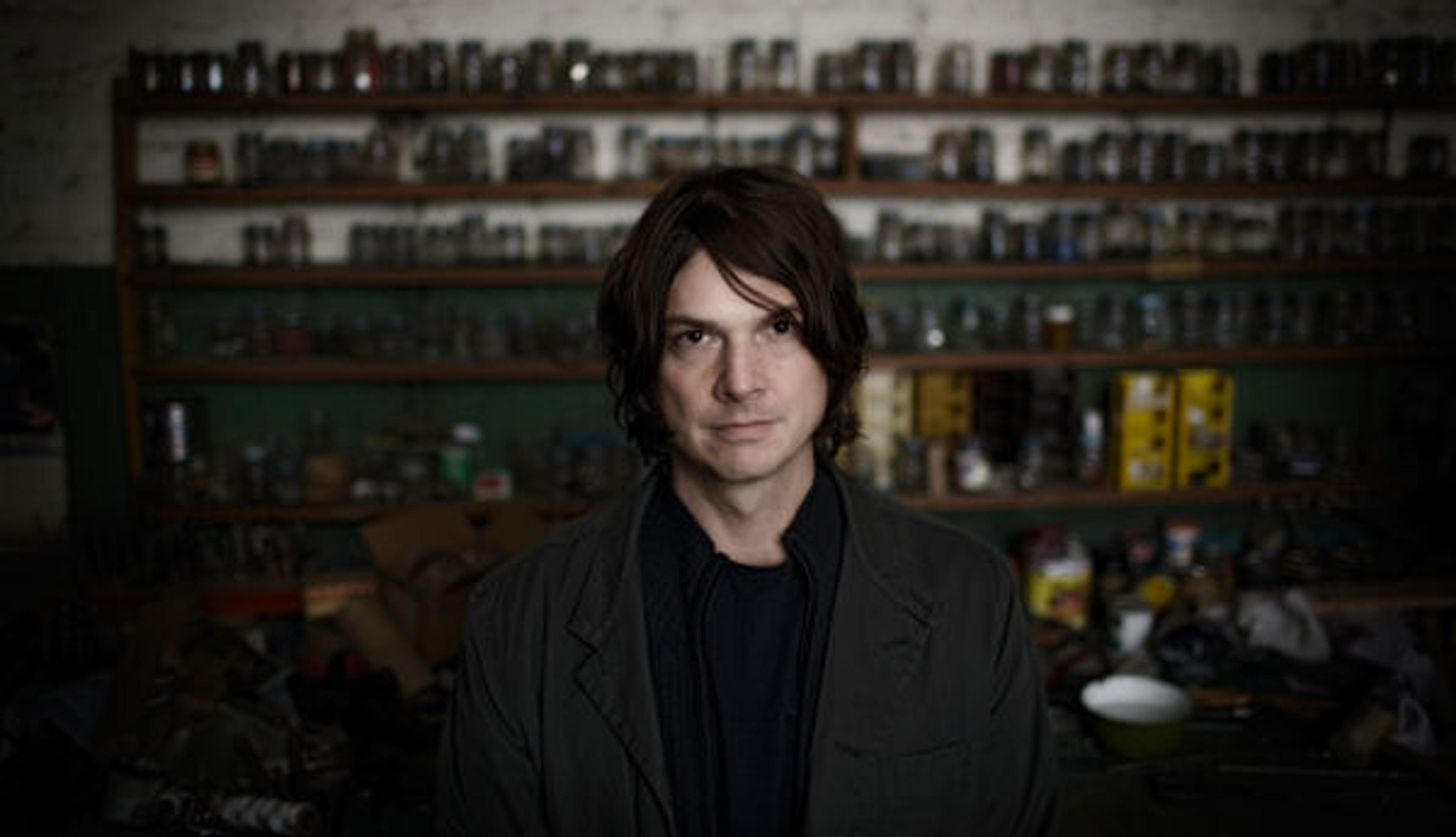
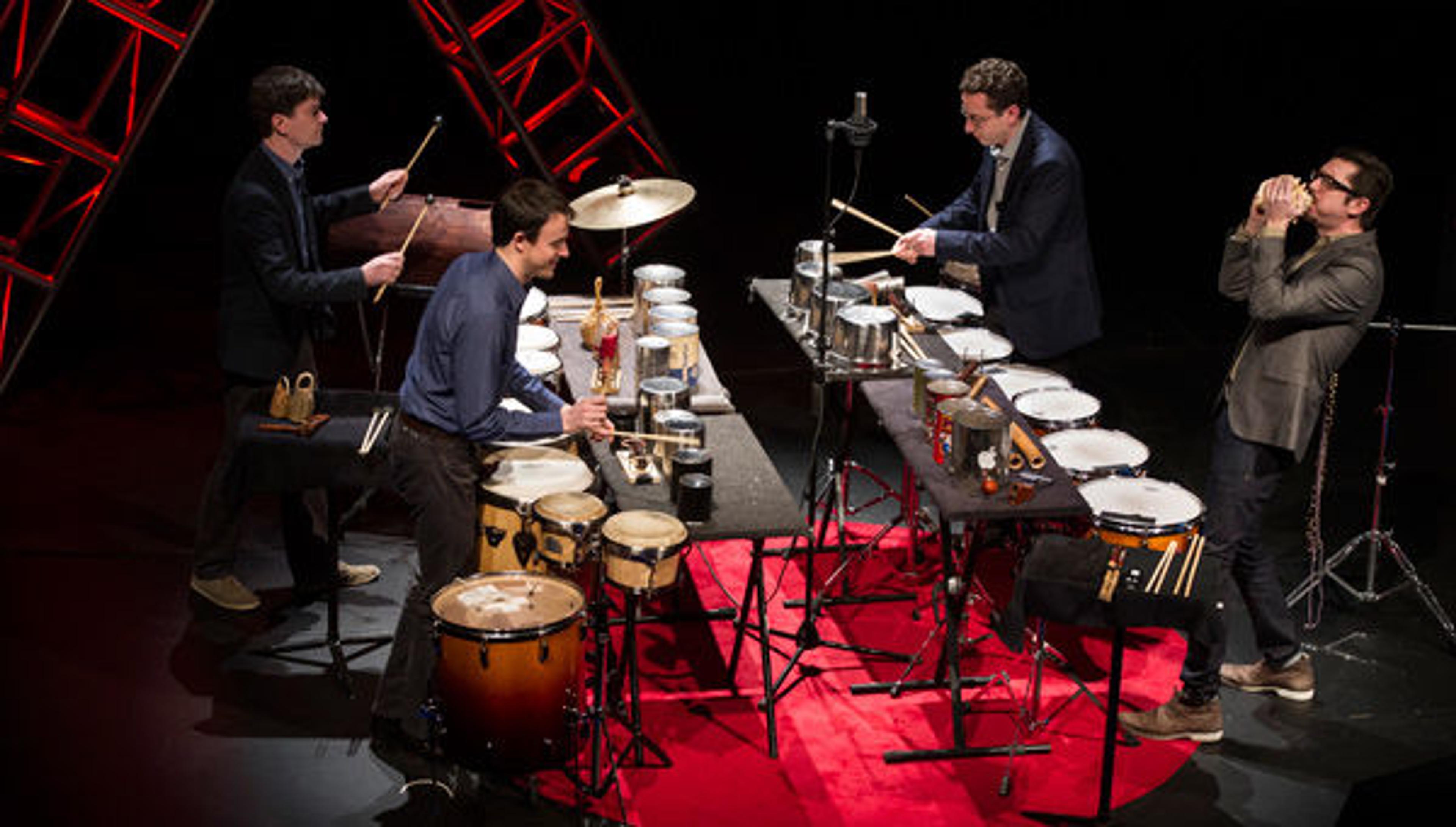
Top: Glenn Kotche. Photo by Zoran Orlic. Bottom: Third Coast Percussion in performance. Photo by Barbara Johnson. © University of Notre Dame
Related Links
Of Note: The Many Sounds of Stone
Read more about the experimental instruments to be featured in this performance on Third Coast Percussion's blog.
To purchase tickets to Wild Sound: Glenn Kotche and Third Coast Percussion, or any other Met Museum Presents event, visit www.metmuseum.org/tickets; call 212-570-3949; or stop by the Great Hall Box Office, open Monday–Saturday, 11:00 a.m.–3:30 p.m.